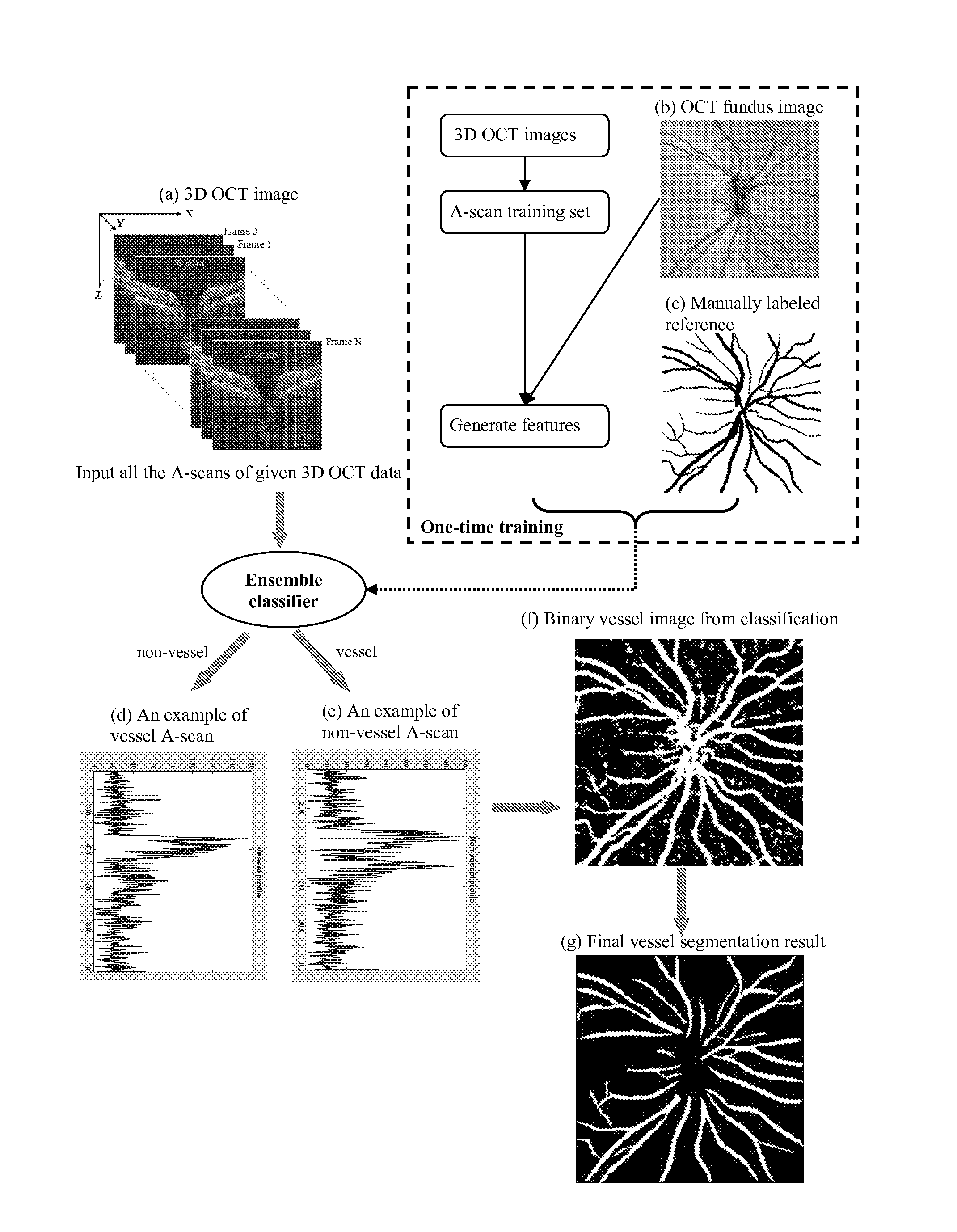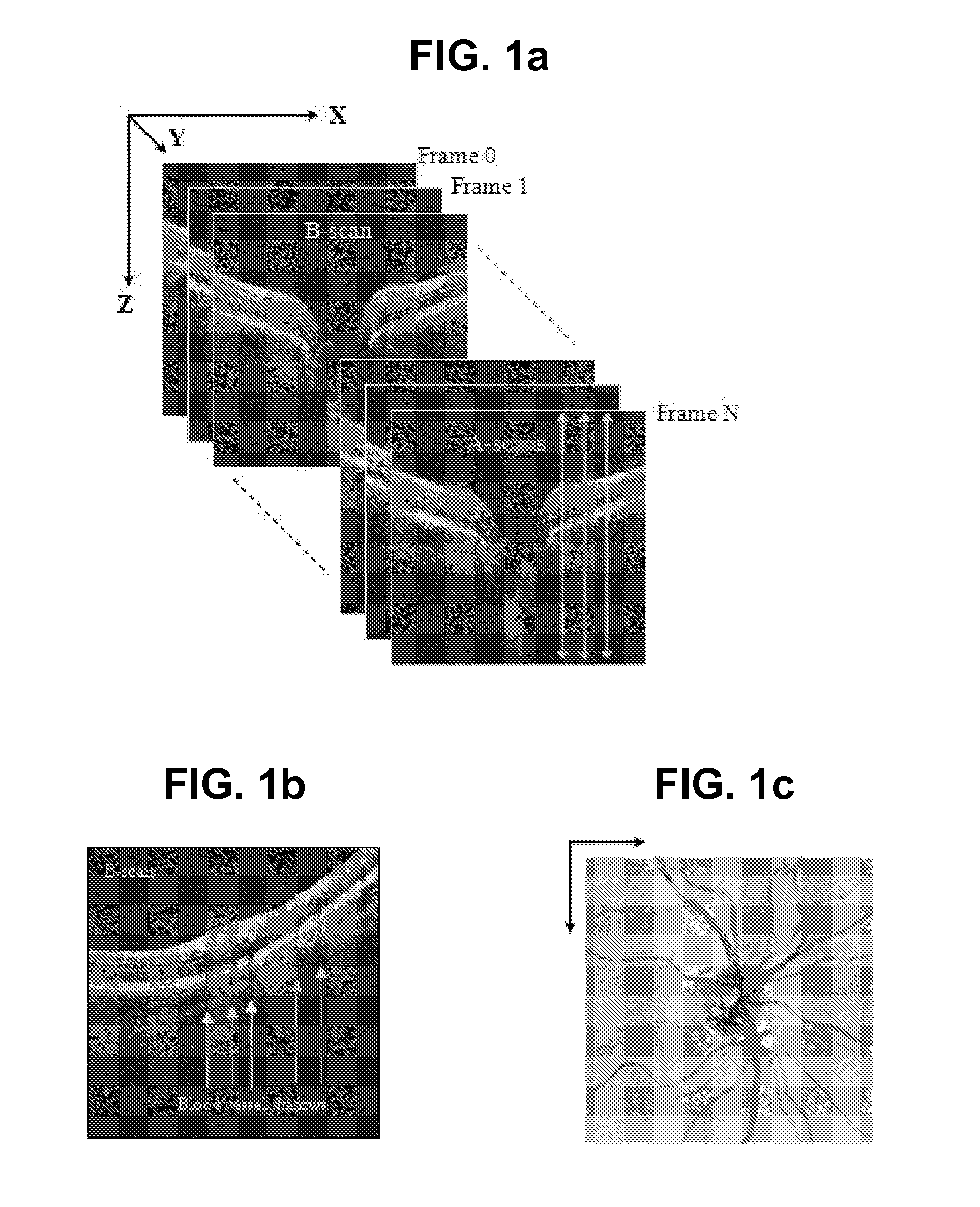Blood vessel segmentation with three-dimensional spectral domain optical coherence tomography
a three-dimensional spectral domain, optical coherence tomography technology, applied in image enhancement, instruments, angiography, etc., can solve the problems of limited approach, reduced vessel pattern visibility, and difficulty in segmentation on oct imag
- Summary
- Abstract
- Description
- Claims
- Application Information
AI Technical Summary
Benefits of technology
Problems solved by technology
Method used
Image
Examples
working examples
NON-LIMITING WORKING EXAMPLES
[0055]The present invention is further illustrated by reference to the following description of methodology within the invention and corresponding results. See [12].
Methodology
[0056]A supervised pixel (A-scan projection on 2D OCT fundus image) classification algorithm is proposed to automatically segment blood vessels on 3D OCT image. 2D derivative Gaussian filters, divergence, gradient magnitude and the third dimensional Haar-function filters are used to generate feature space. Boosting learning is applied to train the classifier and segment the image A-scan by A-scan. The binary vessel image is smoothed by matched filter for post-processing
Feature Extraction
[0057]OCT fundus image, donated by I, is generated by averaging each A-scan. 2D features are extracted on OCT fundus image by taking the responses of 0th to 2nd order derivative Gaussian filters (i.e., G, Gx, Gy, Gxx; Gyy, Gxy) with various sigma (i.e., =1, 2, 4, 8, 16 pixels) [1]. Image gradient ma...
PUM
| Property | Measurement | Unit |
|---|---|---|
| optical coherence tomography | aaaaa | aaaaa |
| two-dimensional | aaaaa | aaaaa |
| Spectral domain optical coherence tomography | aaaaa | aaaaa |
Abstract
Description
Claims
Application Information
 Login to View More
Login to View More - R&D
- Intellectual Property
- Life Sciences
- Materials
- Tech Scout
- Unparalleled Data Quality
- Higher Quality Content
- 60% Fewer Hallucinations
Browse by: Latest US Patents, China's latest patents, Technical Efficacy Thesaurus, Application Domain, Technology Topic, Popular Technical Reports.
© 2025 PatSnap. All rights reserved.Legal|Privacy policy|Modern Slavery Act Transparency Statement|Sitemap|About US| Contact US: help@patsnap.com



